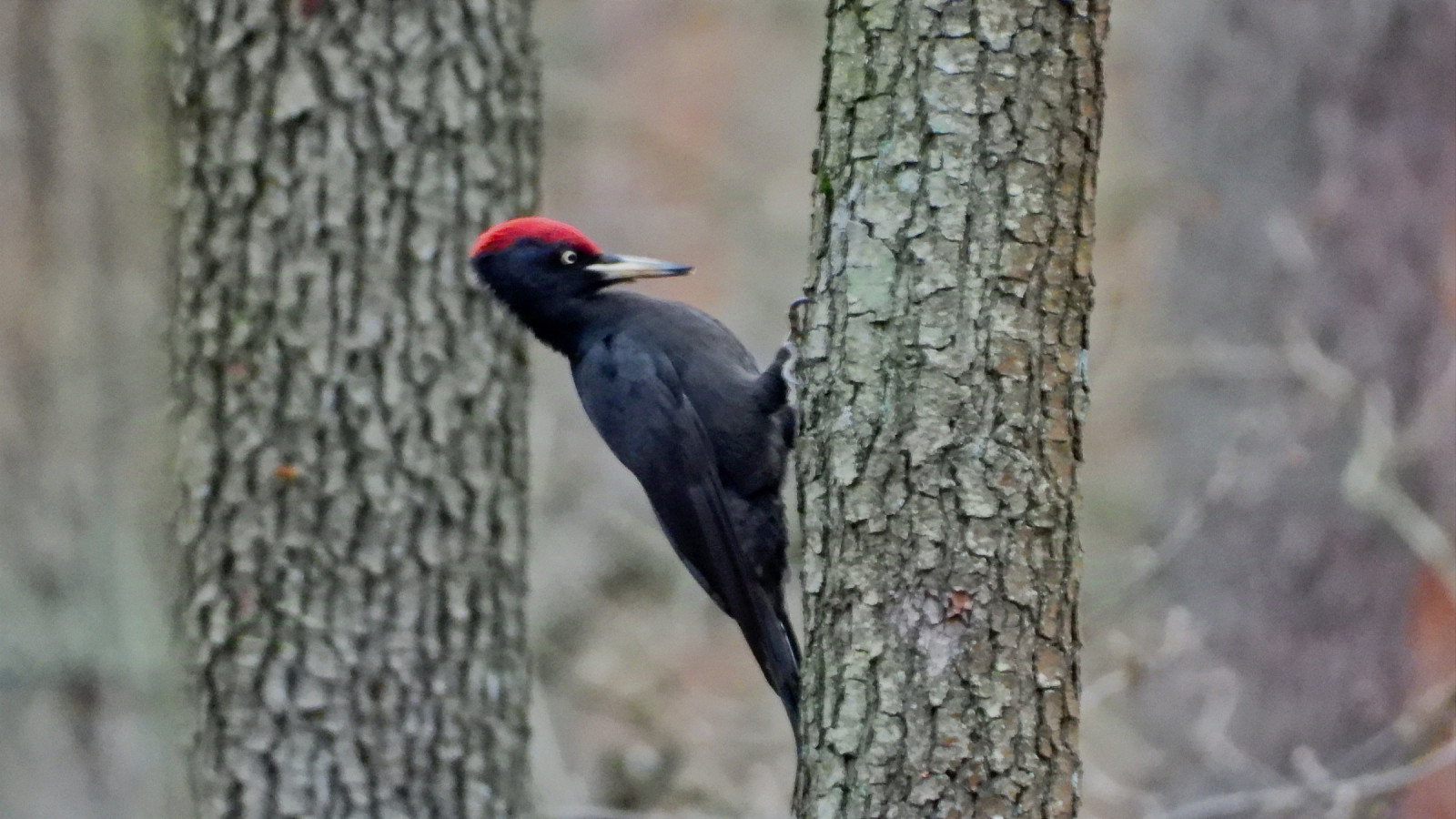Descrição
Lasy Radłowskie Reserve is mainly composed of oak- and pine-dominated forests, with areas containing birch, hornbeam, alder, willow and lime tree. Both older and younger parts make a diverse environment for animals and plants. With a mosaic of man-made water reservoirs and fishponds it is also full of water-dependant organisms, especially birds, both local and migratory.
What's important, a lot of fauna can be observed from the main trail that connects Wierzchosławice and Waryś, so it doesn't require a lot of exploring.
There are plenty of common forest bird species, all native tit and chickadee species, especially Chapim-de-poupa, which can be found in pine-dominated areas, as well as many species of woodpeckers, like Pica-pau-cinzento, Pica-pau-mediano and Pica-pau-preto, which all often can be seen from the main trail, especially near the parking place in Wierzchosławice.
There are a few species of raptors, mostly Águia-d'asa-redonda and Gavião da Europa. Near fishponds there can be seen some resting Águia-rabalva and, especially during migration, Águia-pesqueira. Lasy Radłowskie is home to a few species of owls, especially Bufo-pequeno, Coruja-do-mato, Coruja-uralense and Mocho-pigmeu.
Around fishponds and wetlands there are some areas overgrown with reeds. They are home of many species of passerines, especially species from genus Acrocephalus, Felosa-unicolor and Escrevedeira-dos-caniços.
Other, common species: Pato-real, Mergulhão-pequeno, Pombo-torcaz, Borrelho-pequeno-de-coleira, Corvo-marinho-de-faces-brancas, Garça-real, Garça-branca-grande, Guarda-rios-comum, Pica-pau-malhado-grande, Pica-pau-malhado-pequeno, Pica-pau-verde, Gaio-comum, Corvo, Chapim-preto, Chapim-palustre, chapim-montês, Chapim-azul, chapim-real, Felosa-musical, Felosa-comum, Chapim-rabilongo, Toutinegra-de-barrette-preto, Estrelinha-de-poupa, Trepadeira-azul, Trepadeira-do-bosque, Trepadeira-comum, Carriça, Estorninho-malhado, Tordeia, Tordo-comum, melro, Pisco-de-peito-ruivo, Tentilhão-comum, Bico-grossudo, Dom-fafe, Verdilhão-comum, Pintassilgo and Lugre.
Detalhes
Acesso
The main trail is available from Wierzchosławice or Waryś village. There is a large parking place from Wierzchosławice side. Press a P on the map for directions. It's best to explore both the main trail and other areas by foot, but a bike can also be an option. Local people use the main trail as a shortcut for cars, but it's not advised to try this way of exploring in the forest (especially, there may be restrictions of the use of the road - only for residents/with permission). The main trail is easy, broad and quite flat, but other trails can be narrower and muddy. Access to some paths (especially ones around some fishponds) can be restricted.
Terreno e Habitat
Floresta , Terras húmidas , Árvores e arbustos dispersos , Rio , Pequeno lago , Lamaçais , Parque , Camas de juncoCondições
Plano , Pantanoso , Escorregadio , Possível na maré cheiaCaminho circular
Simé útil um telescópio?
Pode ser útilBoa temporada de observação de aves
Durante todo o anoMelhor hora para visitar
PrimaveraRota
Estrada pavimentada , Caminho largo , Estrada não pavimentada , Caminho estreitoCaminho dificil
FácilAcessível por
Pé , BicicletaAbrigo/plataforma deobservação de aves
NãoInformação extra
Most birds here are very active - there isn't really a need to stimulate them if they are somewhere around. Please, avoid doing so. If you want to find most of the singing birds, try to be there as early, as possible (morning hours). Owls tend to show up mostly in the morning/evening hours.
Best to go along roads/paths, especially the main one, although it can get quite busy in warm weekends.
Hazards: ticks, deep mud, deep wetland. Keep in mind the presence of large animals (deer, moose, boars) and other people (local people driving through main trail, foresters, hunters, mushroom pickers, wanderers etc.)!!!



